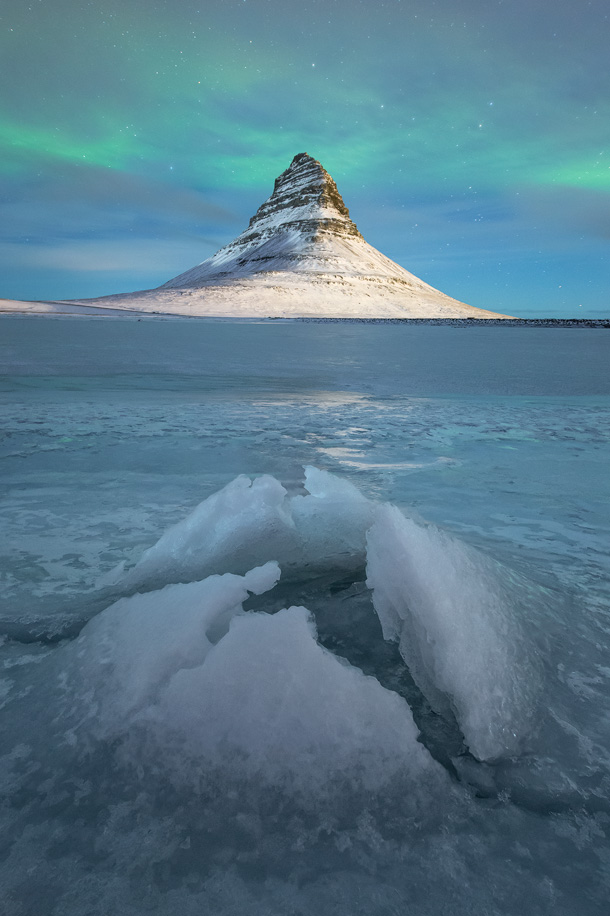How to photograph the Northern Lights

With this week's solar storm causing increased aurora borealis activity we turned to one of the foremost experts in aurora photography to tell us how to photograph the Northern Lights.
All words and pictures by David Clapp

After all the fun and games of last week's aurora borealis activity and then an astronomical finale of a partial solar eclipse of the sun, perhaps you have been thinking about the idea of pointing your camera towards the heavens.
Although exciting locations like Iceland and Norway deliver aurora on a regular basis, it is actually possible to see aurora in the UK.
This week has shown many photographers that their cameras are very capable, but it does take an immense amount of solar energy for this to happen. Nonetheless if you have got the bug, then here's some great advice on how to photograph the Northern Lights.
Aurora is essentially energy from the sun exciting light particles, particles that react with oxygen and nitrogen when entering out atmosphere.
Just like that wonderful junior school experiment with iron fillings and a strong magnet, the earth creates magnetic bands that waves of energy ride along.
Get daily insight, inspiration and deals in your inbox
Sign up for breaking news, reviews, opinion, top tech deals, and more.
Although the energy heads towards the daytime side of earth from the sun, it's the energy returning back to earth on the night time side that creates waves and bands of electrically charged particles, similar to static electricity.
There is a huge auroral oval that spans each of the earth's poles, a ring of activity that is most prominent in places like Russia, Norway, Iceland and Canada.
The higher the activity levels, the larger the oval will span and this is why it can be visible in the UK when activity levels are high.
SEE MORE: Moonlight photography tips - how to make magical midnight landscapes

Tooling Up
Let's assume you know nothing about this genre of photograph and start at the beginning. Firstly you have to be in a dark sky area to fully appreciate and photograph this phenomena, it almost goes without saying. You will need -
1. A DSLR made in the last six years (the newer the better)
2. A sturdy tripod
3. A wide angle lens (like a 16-35) with a minimum aperture of f4 (f2.8 is better)
4. A cable release
5. Turn off all image stabilisation.
The camera will need to be set to a high ISO as the light levels are very low. Does this mean you cannot see it with own eyes? No, its highly visible, but the camera reveals light the eye cannot see as well.
SEE MORE: Bulb mode - how to get pro-quality shots in low light

Now let set the camera's settings too.
1. Set the ISO to 1600 minimum (hence a newish camera model)
2. Set the camera to M for manual
3. Set the lens to the widest aperture f2.8 for example.
4. Set the shutter speed to 20secs.
5. Engage Mirror Lockup for maximum sharpness
You will need to set the lenses focusing to infinity, to ensure the stars are sharp, so use a light source like a planet or a star if your LCD and eyesight is good enough, to achieve critical focusing.
Make sure you position the star in the centre of the frame, not at the edge, as this is not going to be the sharpest area and it will be difficult to achieve critical focus. If there are any distant lights on the horizon, these can work very well too.
Composing
Its all about the night sky so opting for too much land is going to cause a lot of out of focus foregrounds. Unless you are prepared to focus stack images, (making composites of different focal points, like in the example below) then the ratio is 1/3 to 2/3rd land to sky, respectively.
SEE MORE: How to shoot a landscape using the moon as your only light source

Taking Your First Image
Take a test shot and examine the results for sharpness and exposure. The image should be pin sharp in the centre at least, if not you are slightly out of focus. If your optics are high quality then they should be sharp towards the edges too.
Now examine the exposure. You will need to extend the shutter speed if the light levels are low, but as the intensity builds then shorten the sutter speed to avoid burning out the aurora.
Shutter speeds can become as fast as one second when the activity levels are high and this will ensure the aurora has a lot of structure, but most shutter speeds will be between 10 and 30secs.
Remember moonlight can be a friend in these conditions, but avoid full moon unless you specifically want a daytime look. It does little to help matters when every shot has a bright blue afternoon sky.
Carefully study moonrise and moonset times, to ensure the maximum darkness.
Finally wear a red head torch to stop your eyes from burning out when setting up or changing lenses.
Your eyes will not adjust to red, in the same way to other colours, which makes it so much easier to compose your images.
Good luck!
READ MORE
10 quick landscape photography tips
How to expose for landscapes: every question answered
Dramatic landscape photography: the secret to adding impact with natural light
10 landscape photography mistakes every photographer makes (and how to avoid them)